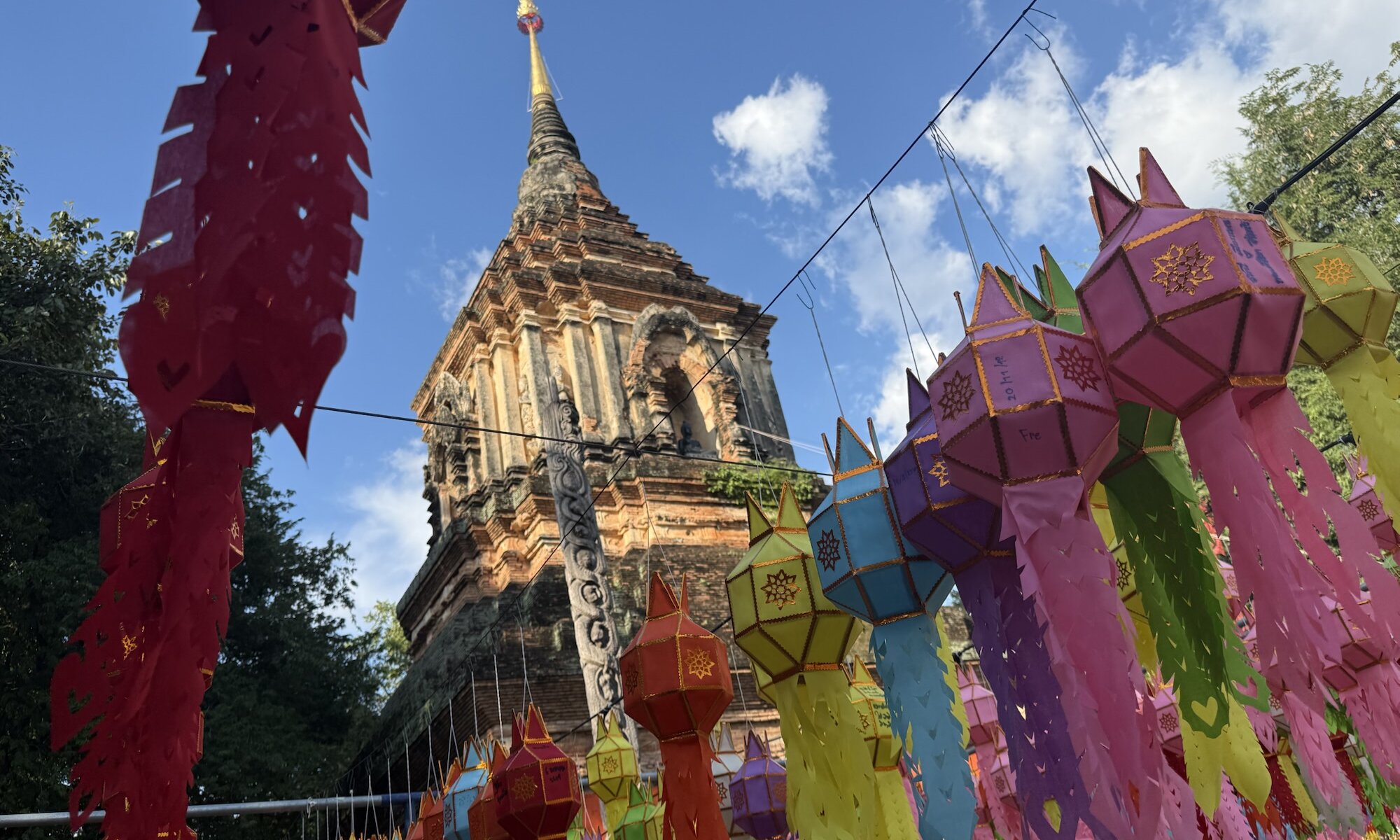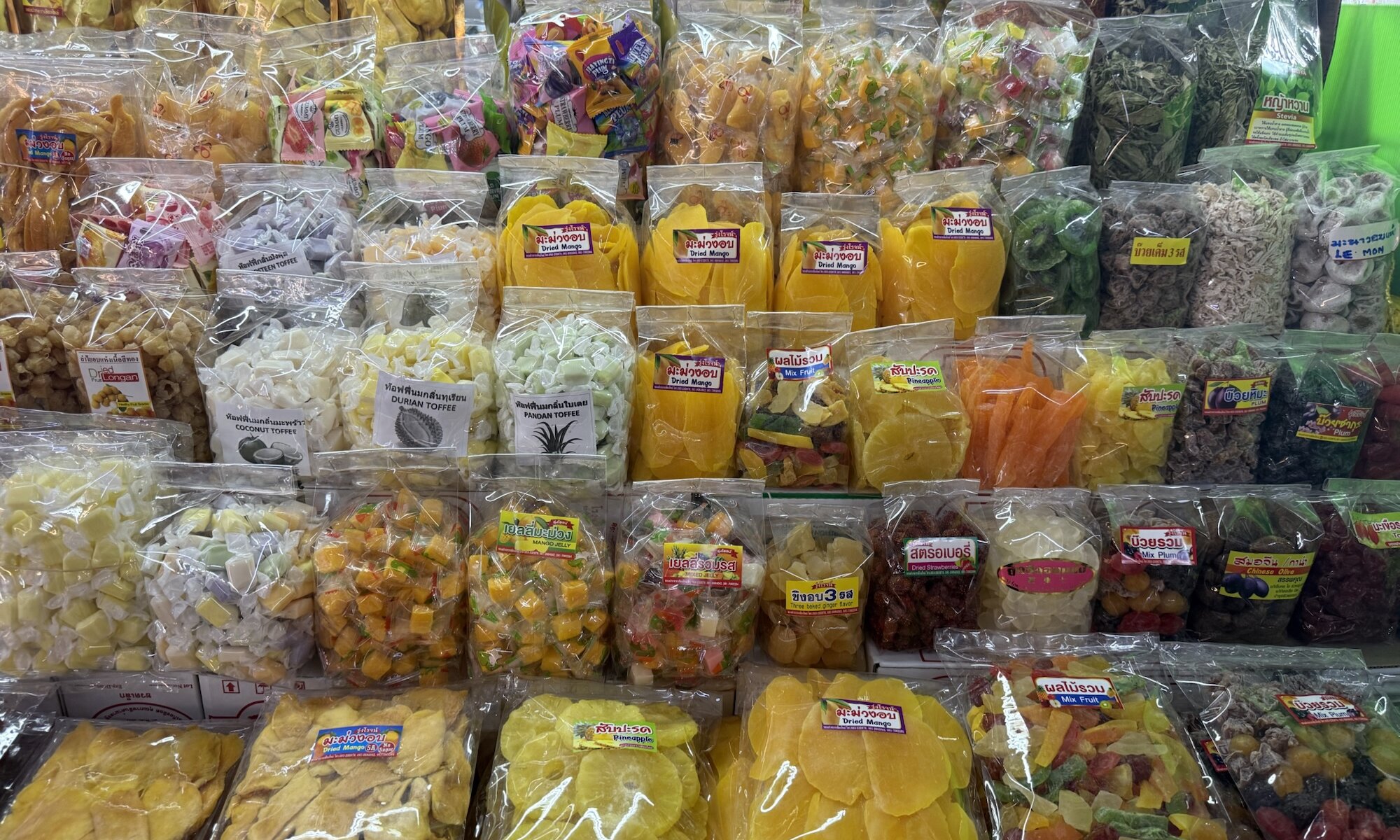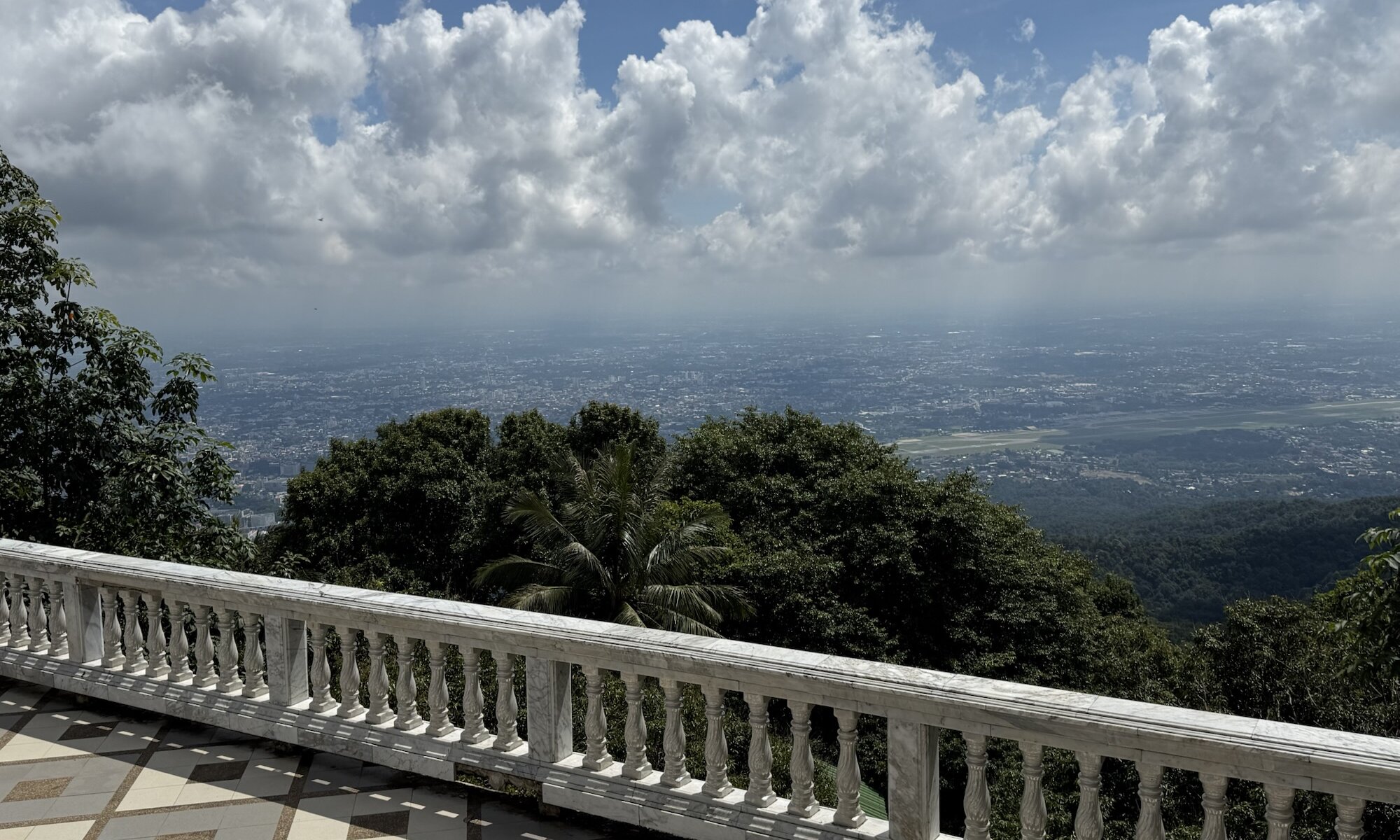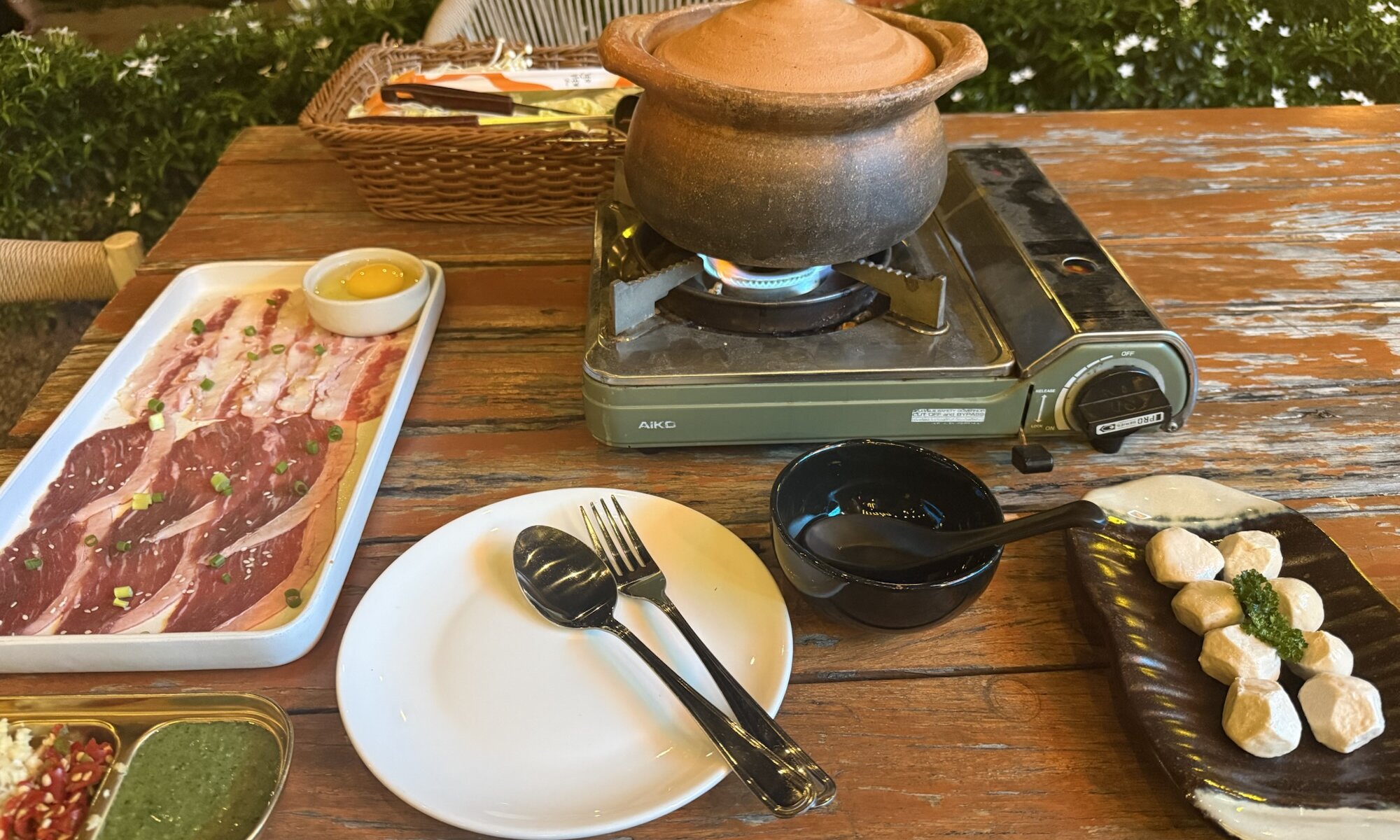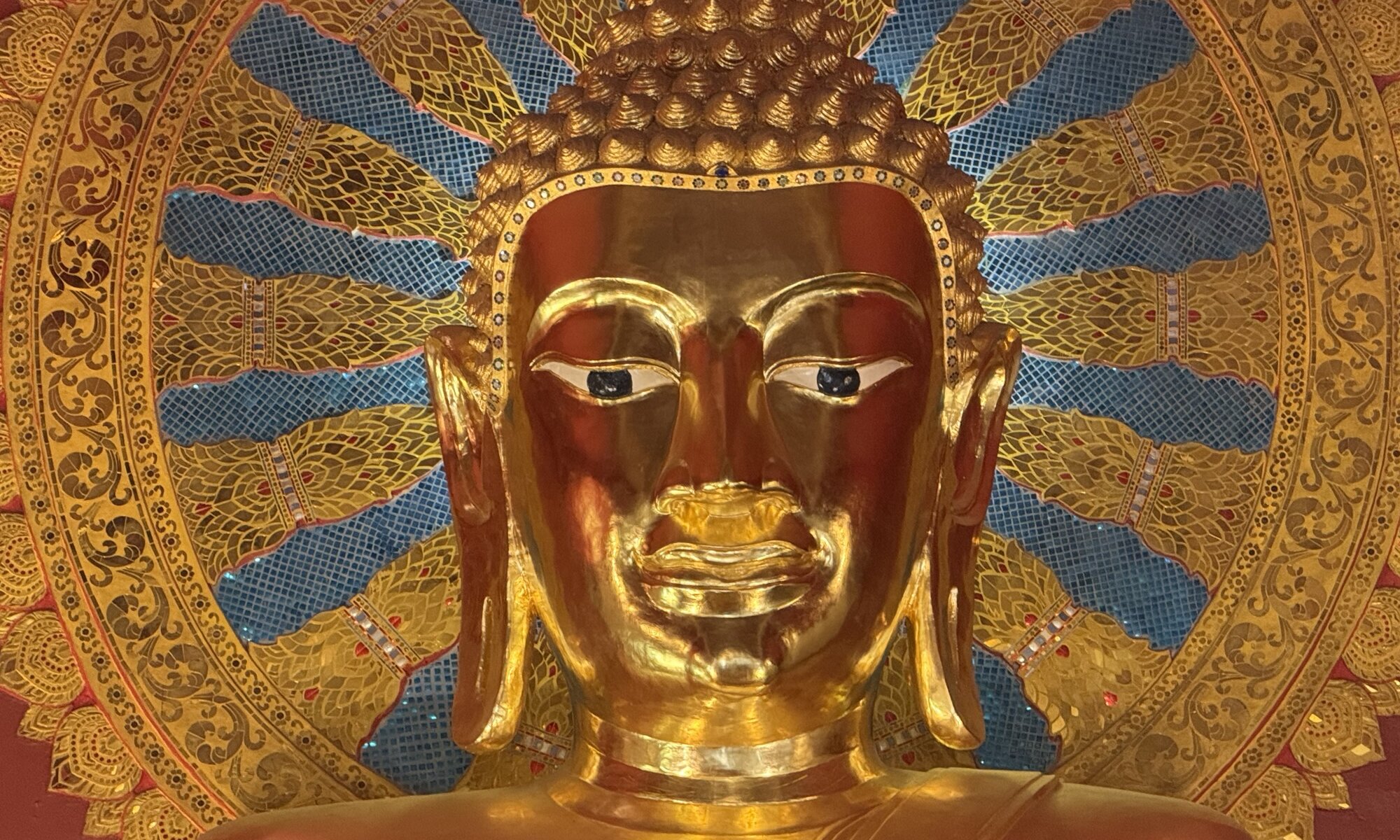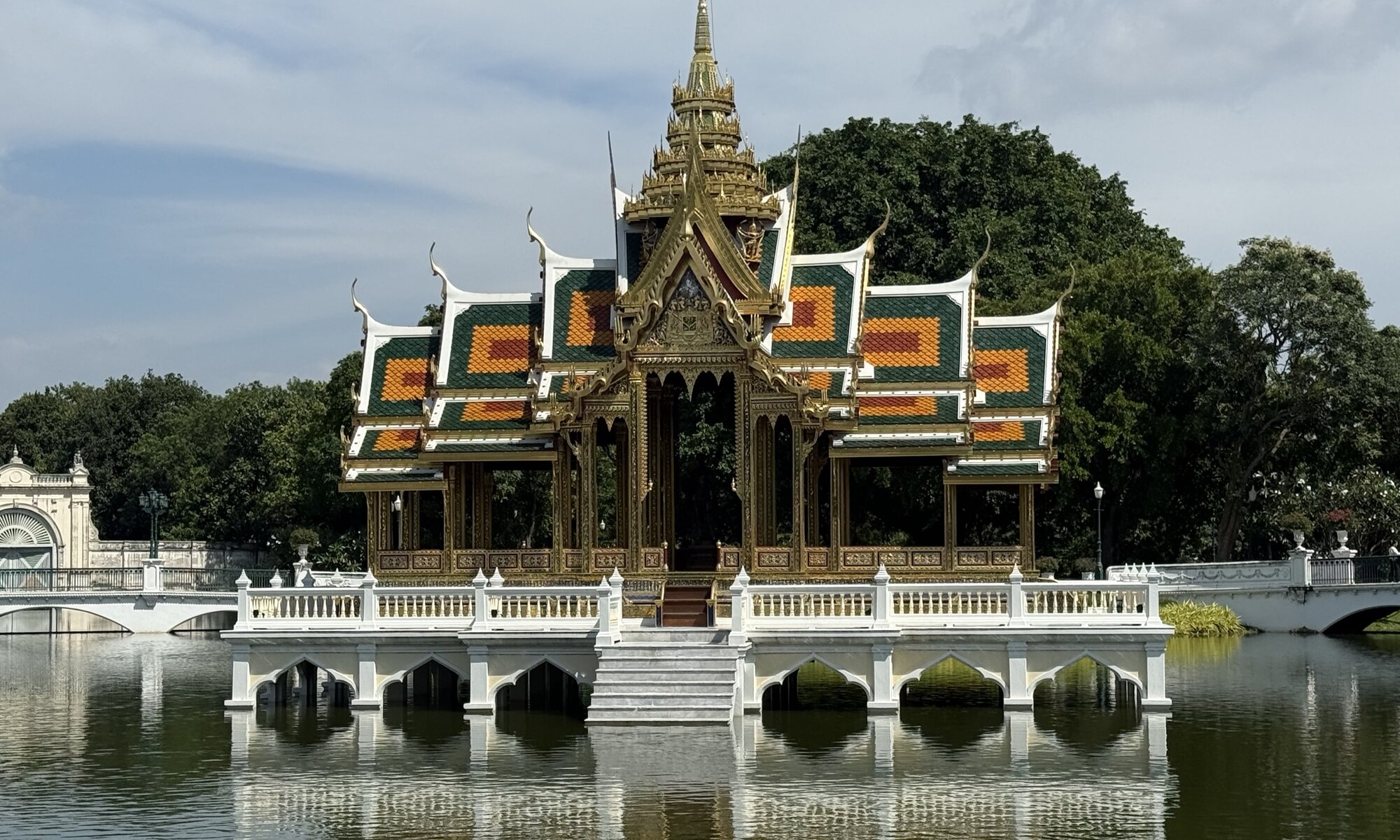Wat Rajamontean in เชียงใหม่ is a modest yet historically rich Buddhist temple nestled in the city’s old quarter. Unlike some of the grander temples in the region, this wat offers visitors a quieter, more intimate experience of northern Thai spiritual heritage. Its origins trace back several centuries, with foundations laid during the Lanna Kingdom period, reflecting the region’s deep-rooted cultural and religious traditions. Though it has undergone restorations, the temple grounds retain an air of authenticity that harks back to its original purpose as a local monastic centre.
Continue reading “Wat Rajamontean”Sky lanterns & floating baskets
Loy Krathong is one of Thailand’s most enchanting and culturally significant festivals, celebrated annually with great enthusiasm across the country. The name ‘Loy Krathong’ translates to ‘floating basket’, referring to the small decorated rafts made from banana leaves, flowers, candles, and incense sticks that people release onto bodies of water. This festival is a beautiful expression of gratitude and respect towards the water goddess, Phra Mae Khongkha, and coincides with the full moon night of the 12th lunar month, usually falling in November. It symbolises renewal, forgiveness, and letting go of misfortune from the past year.
Continue reading “Sky lanterns & floating baskets”Warorot
Warorot Market in เชียงใหม่ is a vibrant and bustling hub that captures the essence of northern Thai daily life. Situated near the Ping River in the old city, it is a favoured spot for both locals and visitors looking to experience authentic market culture. The atmosphere is lively and fragrant, filled with the sounds of vendors calling out and the rich smells of spices and fresh produce, creating an immersive sensory experience.
Continue reading “Warorot”Doi Suthep
Wat Phra That Doi Suthep, perched high in the mountains just west of เชียงใหม่, is one of Northern Thailand’s most revered and scenic spiritual sites. The trek up to this temple offers not only a physical challenge but also a symbolic ascent towards enlightenment, as it sits approximately 1,676 metres above sea level. Historically, it was established in the 14th century during the Lanna Kingdom era, becoming a central religious monument that houses sacred relics of the Buddha. Its location, enveloped by dense forest, affords visitors sweeping views over the city and surrounding countryside, amplifying the serene and contemplative atmosphere.
Continue reading “Doi Suthep”Hotpot
A communal dining experience that centres around a simmering pot of broth placed at the table, where diners cook a variety of fresh ingredients themselves. It is an interactive meal, combining social engagement with the sensory pleasure of watching meats, vegetables, noodles, and seafood slowly cook in the bubbling fluid. The dish is popular in many parts of Asia, but its appeal lies in the ability to tailor each serving to individual tastes and to enjoy the meal at a leisurely pace with friends or family. The broth itself can vary widely, from mild and clear to richly spiced or herbal, often serving as the foundational flavour of the entire meal.
Continue reading “Hotpot”Wat Chedi Luang
Wat Chedi Luang is one of เชียงใหม่’s most iconic and historically significant temples, standing impressively within the old city. The temple’s construction began in the 14th century during the reign of King Saen Muang Ma with the original chedi (a type of stupa) intended to enshrine relics of the Buddha. Although devastated by an earthquake in the 16th century, the structure still commands reverence and awe due to its towering, weathered brick façade and the surrounding complex adorned with vibrant statues and monks in saffron robes.
Continue reading “Wat Chedi Luang”Wat Phra Singh
Wat Phra Singh, nestled in the heart of เชียงใหม่’s old city, is a stunning example of northern Thai Buddhist architecture and a must-visit for anyone interested in culture and history. Established in the 14th century during the Lanna Kingdom, it has served as a spiritual centre and a repository for revered Buddhist relics. The temple’s name, meaning ‚Lion Buddha Temple‘, is inspired by the presence of a significant Buddha image in lion posture, symbolising strength and protection. Over the centuries, Wat Phra Singh has undergone numerous restorations, yet it retains its quintessential Lanna charm, making it a living testament to the region’s religious and artistic traditions.
Continue reading “Wat Phra Singh”Buddha and the tree
Wat Mahathat in พระนครศรีอยุธยา is one of the most iconic and historically significant temples of Thailand’s ancient capital. Established in the 14th century during the early years of the Ayutthaya Kingdom, it served as a royal monastery and was a centre for religious learning and ceremonies. Over centuries, Wat Mahathat witnessed political and cultural shifts but remained a vital spiritual hub until it was largely destroyed during the Burmese invasion in the 18th century. Despite the extensive damage, the temple’s ruins still reveal the grandeur of พระนครศรีอยุธยา’s golden age.
Continue reading “Buddha and the tree”Former royal palace
Wat Phra Si Sanphet stands as one of the most remarkable and historically significant temples in พระนครศรีอยุธยา, the ancient capital of Siam. Established in the 14th century, this grand royal temple served as the royal chapel within the grounds of the old พระนครศรีอยุธยา palace complex. Unlike typical temples, it was reserved exclusively for royal ceremonies and never housed monks, underscoring its sacred importance to the kingdom’s monarchy and religious rituals. The temple’s architecture and layout were designed to represent the heart of พระนครศรีอยุธยา’s religious and political life.
Continue reading “Former royal palace”Summer palace
The Summer Palace at Bang Pa-In, located near พระนครศรีอยุธยา, stands as a remarkable testament to Thailand’s royal heritage and its encounter with diverse architectural influences. Originally constructed in the 17th century during King Prasat Thong’s reign, the palace complex was later abandoned before being revived in the 19th century by King Rama IV and Rama V. Intended as a royal retreat from the sweltering heat of กรุงเทพฯ, this palace served as a tranquil getaway where the monarchs could enjoy the beauty of nature alongside leisure and diplomatic engagements.
Continue reading “Summer palace”

